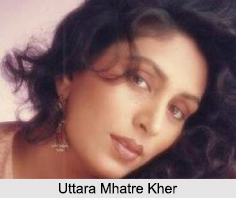 The national radio stations in India have brought about an easy and portable way of entertainment across the country. Almost every household of India is well acquainted with the idea of radio and FM and the national radio stations assure its coverage in almost all the corners of the nation. Those are all the biggest radio stations which are broadcasted national wide. That means they are available only in one specific country or state. Those can be either independent commercial broadcasts or stations that are controlled by government or other national force. This is one of the most popular types of radio stations which attract huge numbers of listeners. Usually they are broadcasted in FM frequencies.
The national radio stations in India have brought about an easy and portable way of entertainment across the country. Almost every household of India is well acquainted with the idea of radio and FM and the national radio stations assure its coverage in almost all the corners of the nation. Those are all the biggest radio stations which are broadcasted national wide. That means they are available only in one specific country or state. Those can be either independent commercial broadcasts or stations that are controlled by government or other national force. This is one of the most popular types of radio stations which attract huge numbers of listeners. Usually they are broadcasted in FM frequencies.
History of All India Radio
The birth of Radio broadcasting in India was started on an experimental basis in the year 1921 when Times of India in collaboration with Post and Telegraph Department started to broadcast a musical programme. Sir George Lloyd put forward this request to those concerned companies. According to an agreement on 23 July 1927, the private Indian Broadcasting Company Ltd (IBC) was authorized to operate two radio stations namely the Bombay station which began on 23 July 1927, and the Calcutta station which followed on 26 August 1927. In 1927 private radio clubs multiplied and in the year 1930 radio broadcasting started operating under the Indian Broadcasting Company. However, the company went into insolvency after a span of three years and the Government took the charge of broadcasting at their own expense. On March 1935 a separate office of the Controller of Broadcasting was created .The landmark in the history of broadcasting is the change of the name of the Indian Broadcasting to All India Radio (AIR) in the year 1936. In the same year the Delhi station of AIR was formed.
On 1 October 1939, the External Service began with a broadcast in Pushtu. It was intended to counter radio propaganda from Germany directed at Afghanistan, Persia and Arab nations. 1939 also saw the opening of the Dhaka station of Eastern India, in what is now Bangladesh. This station catered and nurtured the pioneers of Bengali intellectuals. The foremost among them, Natyaguru Nurul Momen, became the trail-blazer of the talk-show in 1939. He wrote and directed the first modern radio-play for this station in 1942. When India became independent in 1947, the AIR network had only six stations (Delhi, Mumbai, Calcutta, Chennai, Lucknow, and Tiruchirappalli). The three radio stations at Lahore, Peshawar and Dhaka remained in what became Pakistan after the division. The total number of radio sets in India at that time was about 275,000. On 3 October 1957, the Vividh Bharati Service was launched to compete with Radio Ceylon. Television broadcasting began in Delhi in 1959 as part of AIR, but was split off from the radio network as Doordarshan on 1 April 1976. FM broadcasting began on 23 July 1977 in Chennai, and expanded during the 1990s.
Deccan Radio (Nizam Radio 1932), the first radio station in Hyderabad State (now Hyderabad, India), went live on air on 3 February 1935. It was launched by Mir Osman Ali Khan the 7th Nizam of Hyderabad with a transmitting power of 200 Watts. On 1 April 1950, Deccan Radio was taken over by the Indian Government, and in 1956 it was merged with All India Radio (AIR). Since then, it has been known as AIR-Hyderabad (100 kW).
All India Radio was the first national radio station and till date all the affiliated stations of AIR are considered to be a nationally operating one. The national radio stations like 106.4 FM Radio Gold, AIR FM Rainbow and Gyan Vani are some of the most prominent national radio stations, associated with AIR radio station.
Activities of All India Radio
The national radio stations are controlled by the central government and the curriculum revolves around social welfare and national issues. The rural audiences are highly benefited by these national radio stations, which discuss the villagers` problems and solve them through this interactive medium. Radio being the cheapest medium of communication, national radio stations can serve as the best means to reach the poor homes. The national radio stations often cater to the needs of the students by conducting educational programs, relevant to different standards.
AIR has many services in a number of languages, each serving different regions across India. Vividh Bharati is one of the best-known services of All India Radio. Its name roughly translates as "Diverse Indian". It is also known as the Commercial Broadcasting Service or CBS. Commercially, it is the most accessible AIR network and is popular in Mumbai and other large cities. Vividh Bharati offers a wide range of programs including news, film music, short plays, music and comedy. It operates on different medium wave-band as well as FM frequencies in each city. Vividh Bharati service started in 1957.
Central Sales Unit (CSU) is single window services of All India Radio for commercial purposes. Its name roughly translates as "Centralised Sales Unit". It is situated in Mumbai.
The headquarters of the Regional Deputy Directors General are located in Delhi and Chandigarh,Lucknow and Bhopal, Guwahati, Kolkata, Mumbai and Ahmedabad, Chennai and Bangalore. All frequencies are in kHz, unless otherwise noted. Most of the channels are also available online.

106.4 FM Radio Gold: Radio Gold is a radio channel of All India Radio. It is aired in Delhi, Mumbai, Indore, Kolkata, and Chennai. The 106.4 FM Radio Gold also started its transmission in other centres of Tamil Nadu like Coimbatore, Tuticorin and more recently, in Puducherry.
AIR FM Rainbow: AIR FM Rainbow is a group of FM radio channels across India. The group of stations was previously called FM Metro, but the name was changed to FM Rainbow in 2002. The group is run by All India Radio, or AIR, a government owned enterprise. It features Hindi and regional language songs, while also playing English music and providing hourly news in English, regional language and/or Hindi. In Bhopal, FM Rainbow broadcasts in Hindi to more than 12 districts of Madhya Pradesh and 21 Bhopal City suburbs. AIR FM Rainbow Delhi airs in as many as ten cities, more than any of the other FM Rainbow frequencies. Mumbai, Lucknow, Vizag, Hyderabad, Vijayawada, Kakinada, Kochi and Bangalore all receive FM Rainbow transmissions on a variety of frequencies.
Gyan Vani: Gyan Vani is an educational FM radio station in several cities of India. Gyan Vani stations operate as a media cooperative with the day-to-day programmes being contributed by various educational institutions, NGOs, government and semi-government organizations, UN agencies, ministries such as Agriculture, Environment, Health, Women and Child Welfare, Science and Technology, etc. besides national level institutions such as NCERT, NIOS and state open universities. Each Gyan Vani station has a range of about 60 km and covers an entire city including the adjoining rural areas.
AIR FM Gold: AIR FM Gold is a FM radio channel in Mumbai, Delhi, Kolkata and Chennai, India. It is run by the All India Radio, a government owned enterprise, a division of Prasar Bharati. In Mumbai, it features Hindi songs, and English songs along with hourly news in English and Hindi. It operates on 100.1 in Mumbai and on 100.1 Megahertz in Delhi. It was started on 15 August 2001 by the then Ministry of Information and Broadcasting.
Telugu Language Radio: Telugu-language radio was first broadcast from AIR Chennai, Egmore (Then Madras or Chennapatnam) on 16 June 1938 at 16 08:15 pm when the Madras state Prime Minister Kurma Venkata Reddy Naidu and Chief Minister C. Rajagopalachari delivered inaugural speeches. In 1933 a 200 W radio station, started by postal employee Mahbub Ali had gone on-air from Hyderabad, but in 1935 the Nizam of Hyderabad took control of it, and most programs were broadcast in Urdu. In July 1939, it was renamed as Deccan Radio. On 1 April 1950, the Government of India took control from the Nizam and operated it as Akashavani. AIR Vijayawada started on 1 December 1948.
 AIR Srinagar: All India Radio Srinagar is a public radio station operating in Jammu and Kashmir, India. All India Radio Srinagar broadcasts in Kashmiri, Urdu and Hindi languages. Formerly known as Radio Kashmir Srinagar, it was renamed as AIR Srinagar following the Jammu and Kashmir Reorganisation Act, 2019. It is one of public stations in the union territory alongside AIR Jammu and AIR Leh. All India Radio Jammu broadcasts in Dogri, Urdu and Hindi languages.
AIR Srinagar: All India Radio Srinagar is a public radio station operating in Jammu and Kashmir, India. All India Radio Srinagar broadcasts in Kashmiri, Urdu and Hindi languages. Formerly known as Radio Kashmir Srinagar, it was renamed as AIR Srinagar following the Jammu and Kashmir Reorganisation Act, 2019. It is one of public stations in the union territory alongside AIR Jammu and AIR Leh. All India Radio Jammu broadcasts in Dogri, Urdu and Hindi languages.
Vividh Bharti: The Vividh Bharati Service of All India Radio was conceptualized to combat Radio Ceylon in 1957. Vividh Bharati radio channel was launched on 3 October 1957. All these programmes are produced centrally at Vividh Bharati Service, Borivali, Mumbai and up-linked to the satellite. 40 Vividh Bharati stations across the country down-link these programmes through captive earth stations provided at each of these AIR stations. Some local programme windows are also provided at these stations to give regional flavour to the listeners. Vividh Bharati also broadcast on DD Direct Plus, the state owned DTH platform.
Lately, radio has become a vast media in India and private radio channels or FM channels have acquired a national status, owing to their magnanimous coverage area. Big FM, Club FM 94.3, Fever 104 FM, Radio City, Radio Mirchi, Red FM are some among the many national radio stations in India, working successfully.





